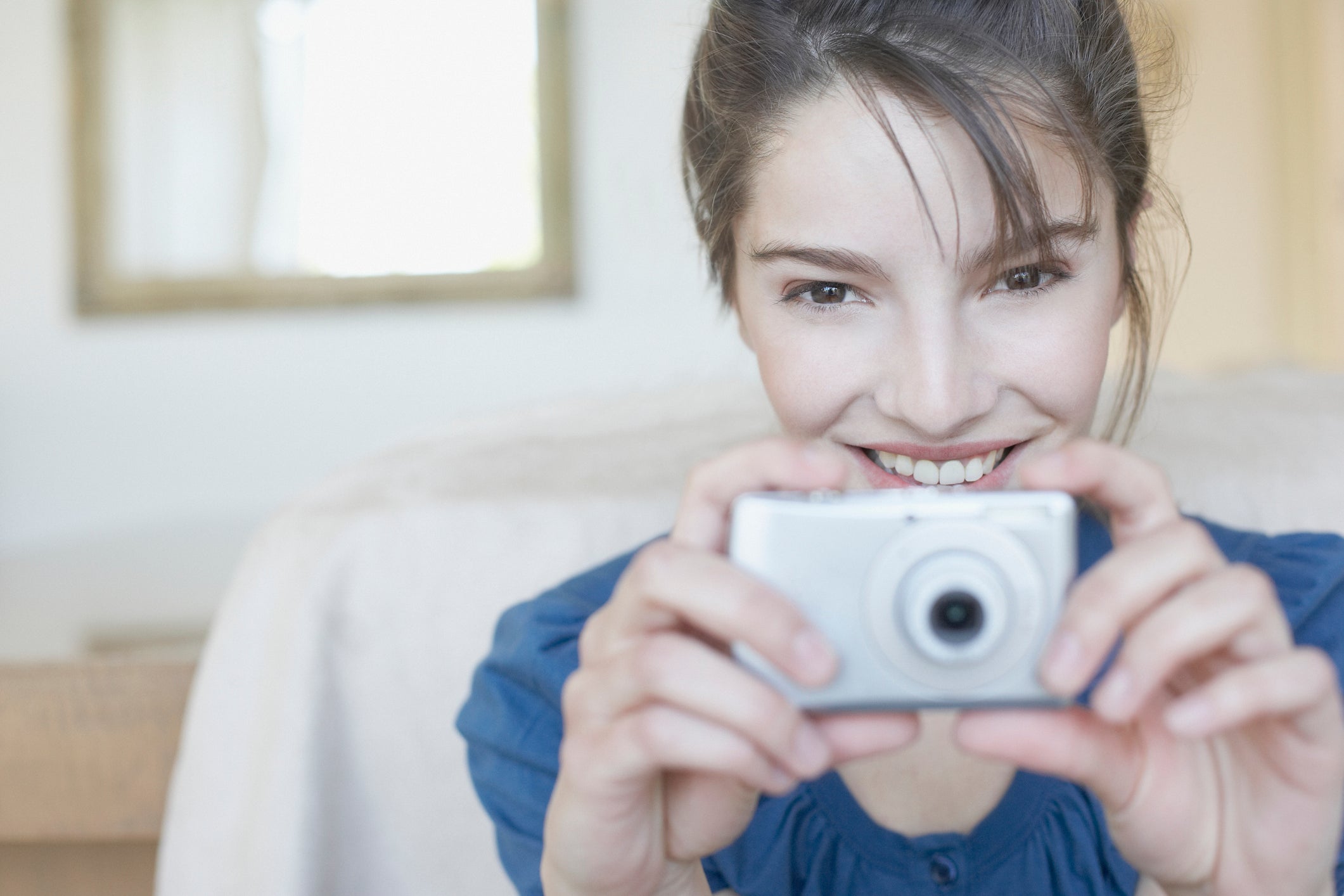20-year-old digital cameras are now a night-out necessity – how did this happen?
As searches for digital cameras soar, Olivia Petter examines what it is about the nostalgic trend that has us hooked. Is it just about the way the photos look? Or is it about getting us to live more in the moment?


Your support helps us to tell the story
From reproductive rights to climate change to Big Tech, The Independent is on the ground when the story is developing. Whether it's investigating the financials of Elon Musk's pro-Trump PAC or producing our latest documentary, 'The A Word', which shines a light on the American women fighting for reproductive rights, we know how important it is to parse out the facts from the messaging.
At such a critical moment in US history, we need reporters on the ground. Your donation allows us to keep sending journalists to speak to both sides of the story.
The Independent is trusted by Americans across the entire political spectrum. And unlike many other quality news outlets, we choose not to lock Americans out of our reporting and analysis with paywalls. We believe quality journalism should be available to everyone, paid for by those who can afford it.
Your support makes all the difference.The tide changed this time last year. At a Christmas party, my friends and I were all snapping away on our phones as usual, trying out various poses before AirDropping countless photos to one another in the hope of securing just one Instagrammable shot. Then out of nowhere, one friend excitedly whipped out something I hadn’t seen since I was a teenager.
“Let me take one on this,” she said, holding a dainty, playing card-sized digital camera. It looked like it had been dug up from an early Noughties time capsule, you know the kind you’d see in a film about American high school students. “Jesus, where did you get that?” we asked. “I found it when I was moving out the other day,” my friend replied. “It takes the most flattering photos.” A few minutes later, she slipped out the memory card, slotting it into a nifty portable device. Before we knew it, the photos were on her phone. They were a bit faded and pixelated, but I daresay, she was right: we looked amazing.
Digital cameras are having a moment. This might sound odd given it’s 2024, a year when almost every phone available for purchase comes with a fairly high-quality camera. The iPhone cameras are so good people are even using them to shoot films. And yet, online searches for “digital camera” have more than doubled from what they were at this time of year in 2021, according to Google Trends. And on TikTok, the hashtag #digitalcamera accompanies more than 276,000 videos. The Canon PowerShot, originally released in 1996, is one popular choice, with the compact G7 X Mark III model regularly being sought after by influencers.
Celebrities are fans, too. Ayo Edebiri snapped away on a Sony Cybershot camera at last year’s Emmys, and the likes of Kylie Jenner and Bella Hadid regularly share overlit, blurred, low-res photos on Instagram that look as if they’ve been taken with a digital camera in the style of a 2001 yearbook. So why, when we have some of the best photography technology available on our phones, are we returning to the humble digital camera?
“Digital cameras are having a particular resurgence, with sales up 50 per cent,” says Georgina Parrott, electrical buyer for John Lewis. “The models from popular brands like Canon and Fujifilm are helping our snappy-happy customers get the perfect shot.” Many associate the uptick with Gen Z, a group that’s “redefining how we document and share our lives”, says Matthieu Rouif, CEO of Photoroom, an AI photo editing software company that has noticed a major increase in digital camera usage. “Whether it’s snapping away at a party, or capturing a candid moment with friends, Gen Z takes photos in nearly every social situation. But it’s not just about the pictures, it’s about the process.”
Digital cameras offer the perfect balance for the trend, combining a nostalgic, raw quality with just enough imperfection to stand out in a sea of polished smartphone snaps
Perhaps smartphones have just made taking photos too easy. They allow us to take five photos when we only want one, and obsess over the minutiae of how we look, overanalysing and over-filtering to the point of parody. They allow us to capture literally anything and everything, whether it’s a painting in a gallery or a particularly frothy coffee. They have also exacerbated our propensity for vanity in the most extreme ways. I can’t tell you how many social occasions have been ruined by staged photoshoots followed by frenzied AirDrop exchanges. It’s boring. It’s time-consuming. And it’s vapid.
Reverting to an older format takes all that away purely because of the pace; my friends with digital cameras tend to use it somewhat sparingly, taking just a few snaps instead of 70. And they reserve them for special occasions, in the way people used to with cameras. The reasons are fairly simple: these cameras aren’t in our hands the way our phones always are. And they’re a bit bulkier and more cumbersome to use.
With the lower resolution, they also do just look a bit cooler, a bit more retro, and tap into our ongoing fixation with all things Y2K, when digital cameras were all the rage. Everyone has been dressing out of this era for some time now – low-rise jeans, tiny sunglasses, and sheer dresses remain at the upper echelons of fashion’s trend circuit – so it makes sense that we’d start to extend the repertoire of this aesthetic to the photos we take.
Of course, people have been revisiting film cameras, too, as well as Polaroids. However, the digital camera offers a hybrid approach that is more accessible to those without the skillset or prowess required to operate those. “Digital cameras offer the perfect balance for the trend, combining a nostalgic, raw quality with just enough imperfection to stand out in a sea of polished smartphone snaps,” says Rouif.
There’s also the simple fact that using a camera, the sole purpose of which is to take photos, gets you off your phone. “This return to a tactile, deliberate approach to photography is a direct reaction to the hyper-connected, always-on nature of smartphones,” he adds.
Personally, I can’t remember the last time I spent more than an hour away from my phone. And that was probably just because I was in an exercise class where I had to hand it over on arrival. Using a camera instead allows people to be more present in the moment they’re trying to capture. It shifts our focus away from what we might want to post on Instagram and brings us back to the very thing photography is for: creating memories.
Even if you do post digital camera photos on Instagram, it makes a refreshing change from those we’ve taken with our phones. Frankly, regardless of whether you care about the aesthetic or not, I think all of us could do with embracing the digital camera trend. Anything that gets us spending less time with those little black rectangles in our pockets? That’s always going to be something I support.
Join our commenting forum
Join thought-provoking conversations, follow other Independent readers and see their replies
Comments